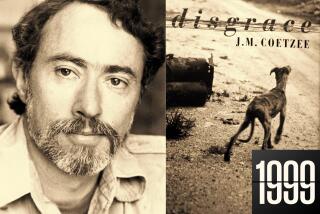The Enduring Moral Outrage of Emile Zola
During the early morning hours of Sept. 29, 1902, Emile Zola died in his sleep of carbon monoxide poisoning from a defective flue. Almost five years had passed since the publication of his open letter to the president of the French Republic alleging that the army, with evidence of espionage in its midst, had framed a Jewish artillery officer, Alfred Dreyfus. And two weeks earlier, on Sept. 10, 1902, L’Aurore had begun serializing his novel “Verite,” which was based in part on what had come to be known as “The Affair.”
Zola’s death was ruled accidental, but unanswered questions left open the possibility that one of the many anti-Dreyfusards who regularly sent him threatening letters had murdered him. When a leftist government elected in June closed all 3,000 schools run by monastic orders known to have preached against Dreyfus, Jews, freemasons and republican institutions, the vindictiveness Zola had excited in 1898 with “J’Accuse” boiled up anew.
Huge crowds, including a delegation of miners grateful for the legislation inspired by “Germinal,” followed Zola’s coffin to the Montmartre cemetery, where soldiers stood ready to maintain civil order. Fearful that praise of her husband’s political heroism might spark a riot, Alexandrine Zola asked the principal eulogist, Anatole France, whether it might not be prudent to commemorate only his literary achievement. France, another eminent foe of the reactionary elements marshaled against Dreyfus, ignored her request; he paid homage above all to Zola the polemicist, whose famous letter had, in his view, launched a movement of social equity predicated upon respect for individual rights and the rule of law.
“Let us not pity the man who endured and suffered,” France urged the mourners, among whom stood Dreyfus. “Let us envy him. Enthroned atop a prodigious collection of outrages heaped up by folly, ignorance, and wickedness, his glory shines on high. Let us envy him: He has honored his country and the world with an immense body of work and a great act.” France’s last line is what rings loudest today: “Let us envy him, for his destiny and his heart have earned him the highest distinction of all: He was a moment in the history of human conscience.”
Had Zola’s childhood been allowed to intrude upon this lordly farewell, a eulogist might have described the Dreyfus Affair as satisfaction finally given to a born duelist, or as the event rounding out a life that had begun with injustice meted out in rigged trials. Born in 1840, Zola was 7 when his father, an Italian engineer who had designed a dam under Mont Sainte-Victoire for channeling water to Aix-en-Provence, died on the eve of its construction. Well-connected swindlers gained control of the Zola Canal Co., reincorporated it and left Madame Zola with worthless shares. She sued, making one futile appeal after another in litigation that spanned Zola’s adolescence.
This rancorous drama--with its scheming notables, its hero defrauded posthumously of his accomplishment, its heir cheated of his birthright, its poverty-stricken widow--served the novelist and polemicist throughout his life. It led him, in his 20s, to lash out against the artistic establishment in articles championing Edouard Manet, who had been rejected by the Salon jury. It became the paradigm of his great novelistic cycle, “Les Rougon-Macquart,” which swarms with outcasts, the disinherited and plots that illustrate mischief practiced by the avaricious upon the naive or defenseless. And it fired his imagination when Dreyfus’ partisans, needing a big voice, called upon him to trumpet the evidence they had collected. Their recitation of the facts became poetry for Zola, according to one such partisan: “ ‘It’s gripping!’ he’d say from time to time .... And he exclaimed: ‘It’s thrilling! It’s horrible! It’s a frightful drama! But it’s drama on the grand scale!’ ”
Still, not every celebrant of Zola’s courageous indictment would have been quick to salute him. From the outset, before the first word of “Les Rougon-Macquart” had been written, he inveighed against ideologues who viewed art as a lackey to their political agendas. In an article on the socialist thinker Proudhon, Zola wrote that good citizenship had no bearing upon the creative enterprise, that an artist would lose his defining credentials without license to speak his imagination or to chronicle his experience.
Thenceforth, critics of every persuasion, but especially leftists pledged to a kind of buttoned-up reformism, showed him no mercy. It was the militant republican Louis Ulbach who built a pyre for “Therese Raquin” and other works he collectively anathematized as litterature putride. And when Zola published “L’Assommoir,” his powerful evocation of life in the slums, Leon Gambetta’s newspaper, La Republique Francaise, berated him for slandering the proletariat with characters almost all given to drunkenness and sexual promiscuity. Politically incorrect as well was the slang Zola put in the mouths of his illiterate personae. Liberal-minded bourgeois, bred at classical lycees on the dictum that whoever ruled French ruled France, decried Zola’s bold mimicry as patronizing, if not expropriative. He was said to have enshrined, with argot, the cultural isolation of the working class.
To gentlemen whose creed hinged on reason and progress, the theories of heredity in “Les Rougon-Macquart” may have been even more offensive than Zola’s use of a primitive, “barbaric” language. Heredity makes itself felt as an inborn Nemesis that keeps pulling climbers off the upper rungs of the social ladder and thwarting more modest ascensions.
Ghosts stalk the Rougons and the Macquarts in their hectic deployment at every level of French society, which is to say that the past simply won’t stay buried. Like Furies enforcing archaic law, or original sin sweeping away the historical record, or a tribal id wreaking havoc with the rational designs of individual egos, it usually exacts its due. The symbolic poles between which Zola’s imagination swings are Paris--the object of provincial aspirations, the gleaming new capital built by France’s sovereign parvenu, Napoleon III--and an obscure Provencal hamlet called Les Artaud. Descended from one ancestor, the village’s 300 inhabitants all bear the same name and marry among themselves. Turned in upon itself, this tiny enclave exists at the beginning of time as an archaic community, surrounded by the 19th century.
The conjunction of minds locked in the Stone Age and a technology created by modern science recurs throughout “Les Rougon-Macquart.” As much as anything else, it is this mismatch that gives Zola’s work its originality and atrocious pertinence.
Examples abound. Machines in “Germinal” loom over mine heads like Jurassic beasts resting on their haunches while half-naked women 1,500 feet underground push coal-laden carts on all fours. In “La Terre,” the bourgeois who introduces scientific agriculture half-a-day’s journey from Paris has his farm destroyed by homicidal autochthons whose relationship to the soil is more anal than seminal.
In “La Debacle,” there are the great Prussian cannons, once displayed at Paris’ Universal Exposition of 1867, blasting Sedan during the Franco-Prussian War. And in “La Bete Humaine,” there is a train that runs out of control--a troop train whose conductor and stoker have killed each other, barreling toward the eastern front. Here, the vehicle on which man, confident in his mastery over nature, rides proudly is detached from rational purpose by jealous rage. A consummate instrument of progress becomes a Moloch of collective self-immolation.
Unlike Flaubert, who abhorred the label “realist,” Zola sported that of “naturalist,” but the scientific credentials he thus claimed for himself obscure the fact that he was, as much as his older friend, a child of Romanticism. Had he been merely diligent, the preparatory files bulging with facts and figures on which he drew to create an empirical scaffolding for each story would be no less valuable than the novels themselves.
What makes the best of Zola’s fiction great literature is its visionary power. It was the irrational undertow of a positivist age that kept him writing, and it inspired memorable images of apocalypse. “L’Assommoir” ends with earthmovers advancing upon the slum doomed to extinction as Napoleon III’s Paris climbs Montmartre. In “Germinal,” an underground lake bursts into the labyrinthine corridors of the mine. Nana unleashes Eros upon the affluent capital.
One imagines that Anatole France’s praise of “J’Accuse” as the inaugural manifesto of an enlightened social order would have made Zola acutely uncomfortable. Experience had taught him not to believe in new dispensations. Had he lived, experience would have confirmed that belief again and again: in August 1914, when men marched exuberantly to the front with the roses of cheering women in their gun barrels; in 1916, when cannons at Verdun rained death on a quarter million human moles to either side of no man’s land; and during the 1930s, when French fascists joined royalist bully boys or Camelots du Roi in proclaiming Dreyfus’ ineradicable guilt.
Modernity for Zola embodied the paradox of progress fostering regression, of material aggrandizement cheapening human character, of science lording it over nature as instinct comes increasingly to lord it over men, of civilized France promoting ideals as uncivilized French seek a tonic in slaughter and expunge the “other” in the service of tribal myths or in the name of class conflict.
For Zola, modernity also resided in the social and spiritual consequences of a world dedicated to movement. Where movement, social mobility no less than physical movement, occupies the exalted seat formerly occupied by moral imperatives, what is forfeit is a sense of assured place and humane proportion. “All or nothing,” proclaims Vautrin, Balzac’s Satanic underworld banker, and this motto might serve as an epigraph to “Les Rougon-Macquart.” On the one hand, unscrupulous entrepreneurs cannot acquire wealth enough to confect an identity as real as the one they buried. On the other, destitution has no limits in such a world.
When Gervaise, transplanted from a sun-drenched southern town, loses her shop in “L’Assommoir,” she ends up living and dying under a tenement staircase and carrying her extinct ambitions to potter’s field.
More to Read
Sign up for our Book Club newsletter
Get the latest news, events and more from the Los Angeles Times Book Club, and help us get L.A. reading and talking.
You may occasionally receive promotional content from the Los Angeles Times.






